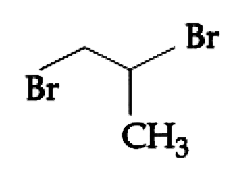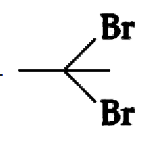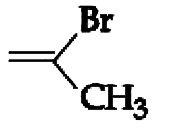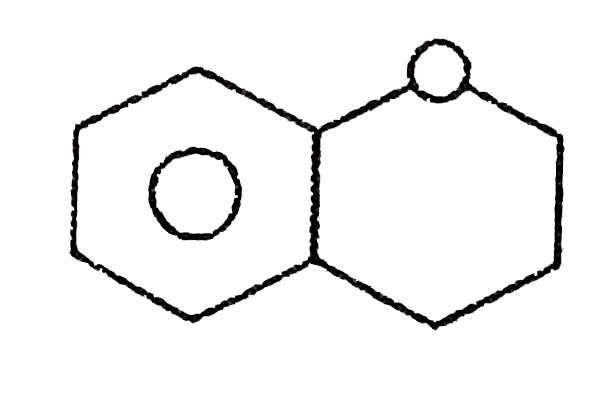1−Methylethylene oxideexcess−−→HBrX, Product 'X' will be-




The correct Answer is:A
To solve the problem of what product 'X' is formed when methyl ethylene oxide reacts with excess HBr, we can follow these steps:
1. Identify the Structure of Methyl Ethylene Oxide:
Methyl ethylene oxide is also known as 1-methoxy-2-oxirane. It has a three-membered cyclic ether structure with a methyl group attached to one of the carbons.
2. Reaction with HBr:
When methyl ethylene oxide reacts with excess HBr, the oxygen atom in the epoxide ring (which is electron-rich) will abstract a proton (H+) from HBr. This results in the formation of a protonated epoxide.
3. Formation of Carbocation:
The protonation of the oxygen leads to a positive charge on the oxygen atom, making it a good leaving group. The bond between the oxygen and one of the carbons will break, leading to the formation of a carbocation. In this case, the bond that breaks will be the one leading to the more stable secondary carbocation.
4. Nucleophilic Attack by Bromide Ion:
The bromide ion (Br-) from HBr will then attack the carbocation. This will lead to the formation of a bromo alcohol.
5. Final Product Formation:
The final product after the nucleophilic attack will be a compound where the bromine atom is attached to the carbon that was originally part of the epoxide ring, and the hydroxyl group (OH) will be on the adjacent carbon.
Thus, the final product 'X' will be 1-bromo-2-methoxypropane.
Final Answer:
The product 'X' formed is 1-bromo-2-methoxypropane.
---
Methyl ethylene oxide is also known as 1-methoxy-2-oxirane. It has a three-membered cyclic ether structure with a methyl group attached to one of the carbons.
When methyl ethylene oxide reacts with excess HBr, the oxygen atom in the epoxide ring (which is electron-rich) will abstract a proton (H+) from HBr. This results in the formation of a protonated epoxide.
The protonation of the oxygen leads to a positive charge on the oxygen atom, making it a good leaving group. The bond between the oxygen and one of the carbons will break, leading to the formation of a carbocation. In this case, the bond that breaks will be the one leading to the more stable secondary carbocation.
The bromide ion (Br-) from HBr will then attack the carbocation. This will lead to the formation of a bromo alcohol.
The final product after the nucleophilic attack will be a compound where the bromine atom is attached to the carbon that was originally part of the epoxide ring, and the hydroxyl group (OH) will be on the adjacent carbon.
The product 'X' formed is 1-bromo-2-methoxypropane.
Topper's Solved these Questions
Similar Questions
Knowledge Check
CHO| CHONaOH−−−→X
The product (X) will beA CH2ONa| COONaB COOH| COOHC CH2OH| COONaD CH2OH| CH2OHcis-2-buteneHBr−−−−−→Peroxide product , Product of the reaction is :
ARacemicBDiastereomersCMesoDE and Z isomerIn the given reaction CH3−CH2−NH−CH2−CH2−Cl(i)CH3I(excess)−−−−−−−−−−−−−→(ii)AgOH/Δ[X] is the major product, [X] will be:
ACH2=CH2BCH2=CHCIC1:1 ratio of (a) and (b)DCH3−CH2−CI
NaOH+(solid)CO200∘C−−−→X, product X is :
View SolutionEthylester CH3CH2MgBr−−−−−−−−→excessP. The product P will be
View Solution HI−−−−→low temp product are
HI−−−−→low temp product are
View SolutionCH3−CH3∣CH∣CH3KmnO4−−−−→(A)H+−−→Δ(B)HBr−−−→ROOR(C)
Product (C) in the above reactions is :
View SolutionMn+(aq.)+KI→X↓ppt.Excess−−−→KI ppt. remains insoluble in excess KI solution. Then cation Mn+(aq.) can be:
View Solution
